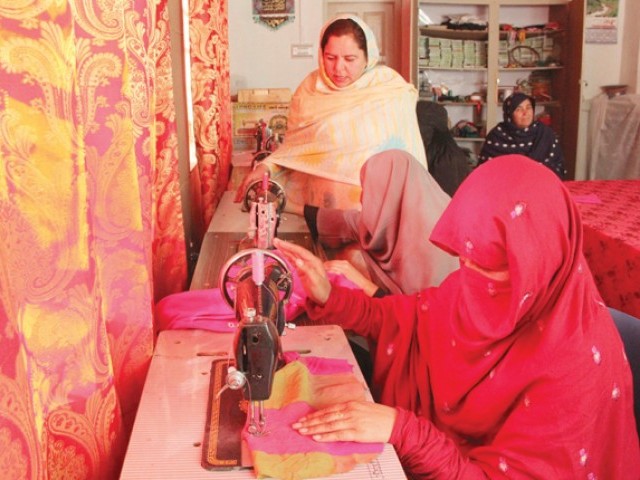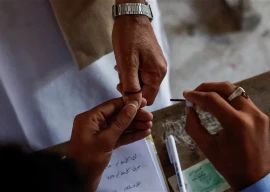
KARACHI: The question of income inequality and its impact on economic development is an old one. Thomas Piketty’s bestselling book “Capital” also wrote on this subject and analysed key economic and social trends for 20 countries ranging as far back as the eighteenth century.
Piketty argues that when the return to capital is greater than the rate of economic growth, in the long term, there is a concentration of wealth and this unequal distribution of wealth causes social and economic instability. This has been reiterated by Oxfam, the renowned aid and development charity, which warns of stark inequality in the future estimating that the richest 1% of the world would own more than 50% of the world’s wealth by 2016.
Women empowerment for securing sustainable alternative livelihoods
This inequality gets deeper as one dissects the population on the basis of gender. A recent tweet by the Gates Foundation quoting UN statistics states that women are highly economically dependent on their male counterparts in developing regions.
About 46% of married women in Sub Saharan Africa earn cash labour income relative to 75% men. Moreover, one in three women has no say in any major household purchase.
Studies have shown that gender-based equality can impact economic outcomes through a number of ways. Firstly, women are more likely than men to invest a large proportion of their household income to educate their children and thus improve the overall development.
More power to the women and less to the dupatta
Secondly, females’ workforce participation increases the overall size of the labour force resulting in better allocation of resources and thus, has a beneficial impact on economic growth.
An important question arises here: can empowering women reduce income inequality? In developing countries, such as Pakistan, female labour force participation rates remain low due to unequal opportunities and lack of enabling environments for women to work in. Divergence in male and female labour force participation rates results in inequality of earnings between the two sexes and thus, feeds into income inequality.
Gender inequality: the case of Pakistan
The United Nations has constructed the Gender Inequality Index (GII) which is a composite index combining various variables to measure gender inequality.
Gender inequality — an equal issue for men
It is comprised of the following variables; reproductive health (maternal mortality ratios and adolescent fertility rates), empowerment (share of parliamentary seats and educational attainment at the secondary level for both male and female), and economic opportunity (labour force participation rates by sex). The GII is between 0 (perfect gender equality) to 1 (perfect gender inequality); higher values of the GII hence mark a loss in human development index. Ranks on the GII for 2013 reveal that the Slovenia followed by Switzerland are the most gender equal with the first and second rank, respectively, whereas Niger has the worst rank and is at the bottom (151).
Although Pakistan has made progress in terms of GII in two decades from 1990-2010, the country ranks 127 on the Index, much lower than its South Asian neighbours such as Sri Lanka (75th rank), Nepal (98th rank) and Bangladesh (115th rank). The poor ranking has primarily been driven by high maternal mortality ratios, poor secondary level educational attainment by females and poor labour force participation rate.
This dataset has also been used in a recent IMF Staff Discussion Note to empirically account for the impact of gender inequality on income inequality. They have concluded that gender inequality is strongly related to income inequality. It has been estimated that controlling for other drivers of inequality, an increase in the gender inequality index from 0 to 1 has been associated with an increase in net income inequality by almost 10 points.
Gender equality: Women face brunt of poverty, calamities: expert
Interestingly, these results hold true for all levels of development. In advanced economies, income inequality exists due to gender gaps in economic participation. In low income countries, this inequality is manifested in inequality of opportunity particularly in education, health and political empowerment which appears to be the primary obstacle towards achieving a more equal income distribution.
Governments should work towards providing a level playing field in terms of economic opportunities for men and women. Policy direction must be set to improve enrolment rates of women at all levels of education, improving healthcare facilities and development of infrastructure that reduces transportation costs and improves ease of travel.
Without these formative steps, achieving gender equality would remain a distant dream for developing countries including Pakistan.
The writer is an economist and ex-central banker
Published in The Express Tribune, November 2nd, 2015.
Like Business on Facebook, follow @TribuneBiz on Twitter to stay informed and join in the conversation.





















1712071304-0/image-(14)1712071304-0-270x192.webp)























COMMENTS (1)
Comments are moderated and generally will be posted if they are on-topic and not abusive.
For more information, please see our Comments FAQ